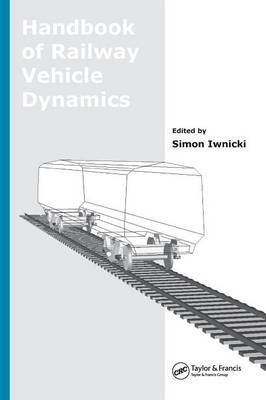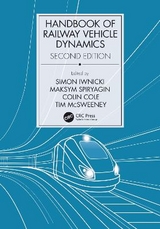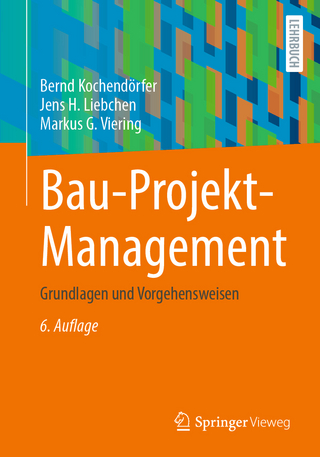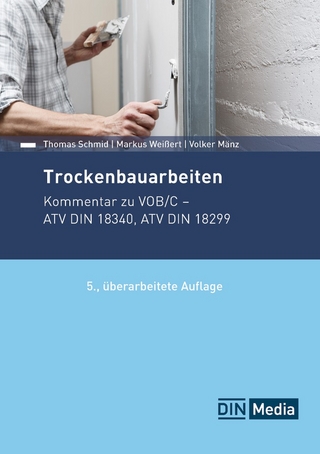
Handbook of Railway Vehicle Dynamics
Crc Press Inc (Verlag)
978-0-8493-3321-7 (ISBN)
- Titel erscheint in neuer Auflage
- Artikel merken
Understanding the dynamics of railway vehicles, and indeed of the entire vehicle–track system, is critical to ensuring safe and economical operation of modern railways. As the challenges of higher speed and higher loads with very high levels of safety require ever more innovative engineering solutions, better understanding of the technical issues and use of new computer based tools is required. Encompassing the field from historical development to state-of-the-art modeling and simulation methods, Simon Iwnicki’s Handbook of Railway Vehicle Dynamics sets a new standard of authority and practicality in the study of railway vehicle dynamics. Drawing on the experiences and research of leading international experts, this critical reference surveys the main areas of railway vehicle dynamics. Through mathematical analysis and practical examples, it builds a deep and functional understanding of the wheel–rail interface, suspension and suspension component design, simulation and testing of electrical and mechanical systems, interaction with surrounding infrastructure, and noise and vibration. In-depth discussions deconstruct the components of both vehicle and track systems, explain their contribution to dynamic behavior, and evaluate the advantages and disadvantages of various practical solutions. The book also considers the unique issues of railway tribology, gauging, and derailment.
Coverage of computer models, test procedures, roller rigs, and scale testing completes this essential handbook. Whether for the newcomer or the seasoned professional, the Handbook of Railway Vehicle Dynamics is an indispensable tool for modern railway vehicle design.
Introduction; Simon Iwnicki
Aims
Introduction to the Aims of Handook
Structure of the Handbook
A History of Railway Vehicle Dynamics; Alan Wickens
Introduction
Coning and the Kinematic Oscillation
Concepts of Curving
Hunting and the Empirical Development of the Bogie
Interaction between Vehicle and Track
Innovations for Improved Steering
Carter
Wheel–Rail Geometry
Matsudaira
The ORE Competition
Creep
The Complete Solution of the Hunting Problem
Modern Research on Curving
Dynamic Response to Track Geometry
Suspension Design Concepts and Optimisation
Derailment
The Development of Computer Simulation
Active Suspensions
The Expanding Domain of Rail Vehicle Dynamics
References
The Anatomy of Railway Vehicle Running Gear; Anna Orlova and Yuri Boronenko
Main Functions of the Running Gear and Terminology
Bogie Components
Common Passenger Vehicle Bogie Designs
Common Freight Wagon Bogie Designs
Common Tram Bogie Designs
Principles of Selecting Suspension Parameters
Advanced Bogie Designs
References
Wheel–Rail Contact; Jean Bernard Ayasse and Hugues Chollet
Introduction
The Normal Contact
The Tangent Problem
Contact Forces in the Railway Context
Appendix 4.1: Kinematic Movement: The Klingel Formula
Appendix 4.2: Kinematic Hunting and Equivalent Conicity
Appendix 4.3: The Circle Theory
Appendix 4.4: Analysis of Y/Q and Nadal’s Criteria
Nomenclature
References
Tribology of the Wheel–Rail Contact; Ulf Olofsson and Roger Lewis
Introduction
Contact Conditions at the Wheel–Rail Contact
Wear and Other Surface Damage Mechanisms
Friction
Lubrication and Surface Coatings
Acknowledgments
References
Track Issues; Tore Dahlberg
The Railway Track as a Dynamic System
Function of the Track
Dynamic Properties of the Track
Dynamic Properties of Track Components
Summary
Acknowledgements
References
Gauging Issues; David M. Johnson
Philosophy and History of Gauging
Components of Gauging
Interaction between Gauging Components
References
Railway Vehicle Derailment and Prevention; Huimin Wu and Nicholas Wilson
Introduction
History and Statistics
Railway Vehicle Derailment Mechanisms and Safety Criteria
Prediction of Derailment
Prevention of Derailment
References
Longitudinal Train Dynamics; Colin Cole
Introduction
Modelling Longitudinal Train Dynamics
Interaction of Longitudinal Train and Lateral/Vertical Wagon Dynamics
Longitudinal Train Crashworthiness
Longitudinal Comfort
Train Management and Driving Practices
Conclusions
Acknowledgments
Nomenclature
References
Noise and Vibration from Railway Vehicles; David Thompson and Chris Jones
Introduction
Rolling Noise
Reducing Rolling Noise
Impact Noise
Curve Squeal
Other Sources of Noise
Vehicle Interior Noise
Ground-Borne Vibration and Noise
Vibration Comfort on Trains
References
Active Suspensions; R.M. Goodall and T.X. Mei
Introduction
Basics of Active Suspensions
Tilting Trains
Active Secondary Suspensions
Active Primary Suspensions
Technology
The Long Term Trends
Nomenclature
References
Simulation; Oldrich Polach, Mats Berg, and Simon Iwnicki
Introduction
Modelling Vehicle–Track Interaction
Simulation Methods
Computer Simulation
Dynamics in Railway Vehicle Engineering
Conclusions
Acknowledgments
Nomenclature
References
Field Testing and Instrumentation of Railway Vehicles; Julian Stow and Evert Andersson
Introduction
Common Transducers
Test Equipment Configuration and Environment
Data Acquisition
Measurement of Wheel and Rail Profiles
Track Geometry Recording
Examples of Vehicle Laboratory and Field Tests
References
Roller Rigs; Weihua Zhang, Huanyun Dai, Zhiyun Shen, and Jing Zeng
Introduction
The History of Roller Rigs
The Test Technique and Classification of Roller Rigs
Examples of Roller Rigs
Operation and Results
Conclusions
References
Scale Testing; P.D. Allen
Introduction
A Brief History of Scaled Roller Rigs
Survey of Current Scaled Roller Rigs
Roller Rigs: The Scaling Problem
Scaling Errors
Conclusions
Acknowledgements
References
Index
| Erscheint lt. Verlag | 22.5.2006 |
|---|---|
| Zusatzinfo | 39 Halftones, black and white; 51 Tables, black and white; 458 Illustrations, black and white |
| Verlagsort | Bosa Roca |
| Sprache | englisch |
| Maße | 178 x 254 mm |
| Gewicht | 1134 g |
| Themenwelt | Technik ► Bauwesen |
| Technik ► Elektrotechnik / Energietechnik | |
| ISBN-10 | 0-8493-3321-0 / 0849333210 |
| ISBN-13 | 978-0-8493-3321-7 / 9780849333217 |
| Zustand | Neuware |
| Haben Sie eine Frage zum Produkt? |
aus dem Bereich



